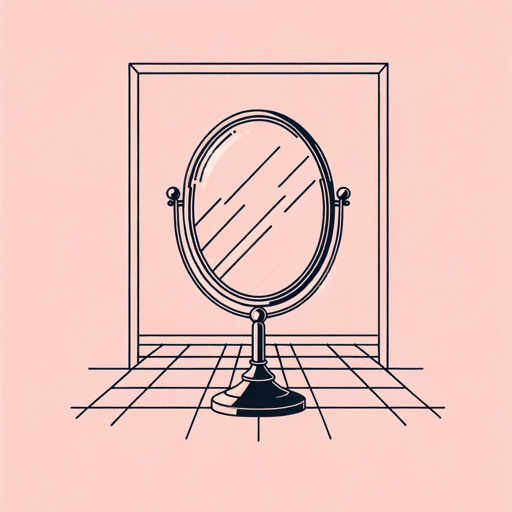44 pages • 1 hour read
Simone de BeauvoirThe Second Sex
Nonfiction | Book | Adult | Published in 1949A modern alternative to SparkNotes and CliffsNotes, SuperSummary offers high-quality Study Guides with detailed chapter summaries and analysis of major themes, characters, and more.
Summary and Study Guide
Overview
The Second Sex was written by Simone de Beauvoir and published in 1949. The book is divided into two volumes: Facts and Myths and Lived Experience. When it was released, The Second Sex was not considered a work of historical, literary, and social analysis, rather than a work of philosophy. Moreover, Beauvoir did not identify as a philosopher. Nevertheless, the book became known as a major work of feminist philosophy, and today Beauvoir is widely considered a pioneering philosopher on the topics of gender theory and women’s rights.
Upon its publication, The Second Sex was extremely controversial. It was quickly put on the Catholic Church’s List of Forbidden Books. Further, the book was completely banned in Spain, then under the fascist dictatorship of Francisco Franco. Still, the book had an impact. In the United States, it inspired feminist Betty Friedan’s landmark book The Feminine Mystique (1963) and influenced the international second-wave feminist movement of the 1960s and 1970s.
There were also controversies around the book’s English translation. The first English translation was made by H. M. Pershley in 1953. This translation became criticized for various errors and for misinterpreting several of Beauvoir’s ideas. Constance Borde and Sheila Malovany-Chevallier’s new, complete English translation was not available until 2009. This study guide is based on the 2009 translation.
Plot Summary
Beauvoir begins with a simple question: “But first, what is a woman?” (3). The answer Beauvoir offers is that women are not born women—they are made women by society and culture. Further, Beauvoir argues women are defined by their relationship to men. Traditionally, men have been considered the default, meaning men’s experiences and concerns are treated as universal for humanity. Meanwhile, women are “the Other” (6), defined in relation to men and not in their own right. Beauvoir writes, “Humanity is male, and man defines woman, not in herself, but in relation to himself; she is not an autonomous being” (5). The Second Sex seeks to explain this state of women’s identity, how it came about, and how it might change in the future.
In the first volume Facts and Myths, Beauvoir discusses past writings and debates over the biology, history, and psychology of women. She suggests there are biological differences between women and men, stemming from women’s reproductive role. However, this alone does not explain why women are marginalized across the world. Instead, Beauvoir argues a woman’s “body alone is not enough to define her” (48). Biology may provide a basis for women’s oppression and justify it, but it is society that defines what it means to be a woman. This is what oppresses women.
Turning to history, Beauvoir argues that, despite women’s role in human reproduction, she has never had a privileged place in society. Even among prehistoric societies that could be described as “matriarchal,” women were still limited and dominated by men. Women’s power was never fully political; it was only advisory, spiritual, and symbolic: “She only mediates the law; she does not possess it” (81). Even the goddesses in ancient societies were created by men and made subordinate to masculinity.
As societies changed with the rise of private property, women’s condition worsened. Women’s rights were restricted by concerns over property and inheritance. Often, women were treated like property themselves. Beauvoir argues that women fared better and enjoyed more rights in societies like ancient Sparta and Rome, where the government had significant power and the rights of individual families were limited. Even there, however, the state claimed paternal authority over all women.
Because of its suspicion of sexuality and emphasis on ascetism, the emergence of Christianity caused women’s condition to worsen. In the Christian view of the world, Beauvoir argues, “The temptations of the earth, sex, and the devil are incarnated in [women]” (186). In medieval Europe, women were idealized through courtly love, but even courtly love did nothing to improve women’s status.
In the second volume, Beauvoir describes the life of an archetypal woman, from early childhood to old age. Through their education and their experiences with men and with their mothers, women are taught to be passive and encouraged to see themselves as objects for men. Motherhood further forces women to become subordinate to their husbands and to sacrifice what freedom they have. A woman only regains some freedom in old age, but when they do so, “she can find nothing more to do with it” (627). Beauvoir further argues that even women, like lesbians, who defy what is expected of women still lead lives defined by manhood and femininity. Likewise, while sex workers may have some freedom, they are still dependent on men in much the same way wives are. Women in creative fields are also limited by the restrictions their femininity places on them. Beauvoir speculates that, because of these limitations, there could have been no female Franz Kafka or Vincent van Gogh (750).
However, Beauvoir sees the opening of new economic and professional opportunities for women in her time as transformative. At the same time, Beauvoir argues this transformation has yet to happen in any society. Both men and women must perceive each other as true equals. Further, the “moral, social, and cultural consequences” (761) of women’s economic liberation must be fully felt and accepted before women truly come into their own without being defined by their relationship to men.
Related Titles
By Simone de Beauvoir
Featured Collections
Books that Feature the Theme of...
View Collection
Equality
View Collection
Existentialism
View Collection
Philosophy, Logic, & Ethics
View Collection
Pride Month Reads
View Collection
Required Reading Lists
View Collection
School Book List Titles
View Collection
Sociology
View Collection
Women's Studies
View Collection






